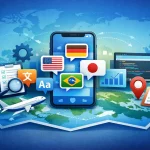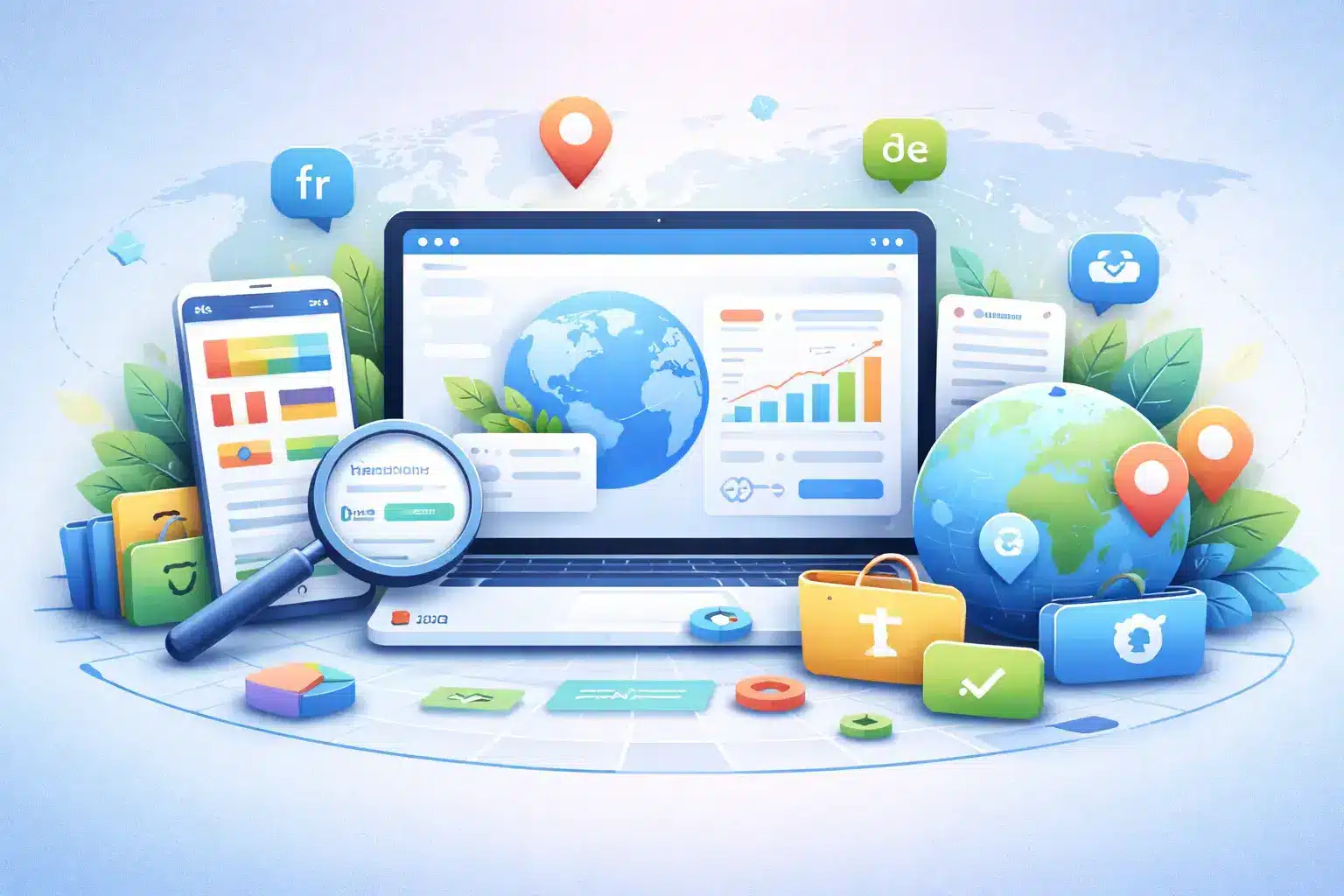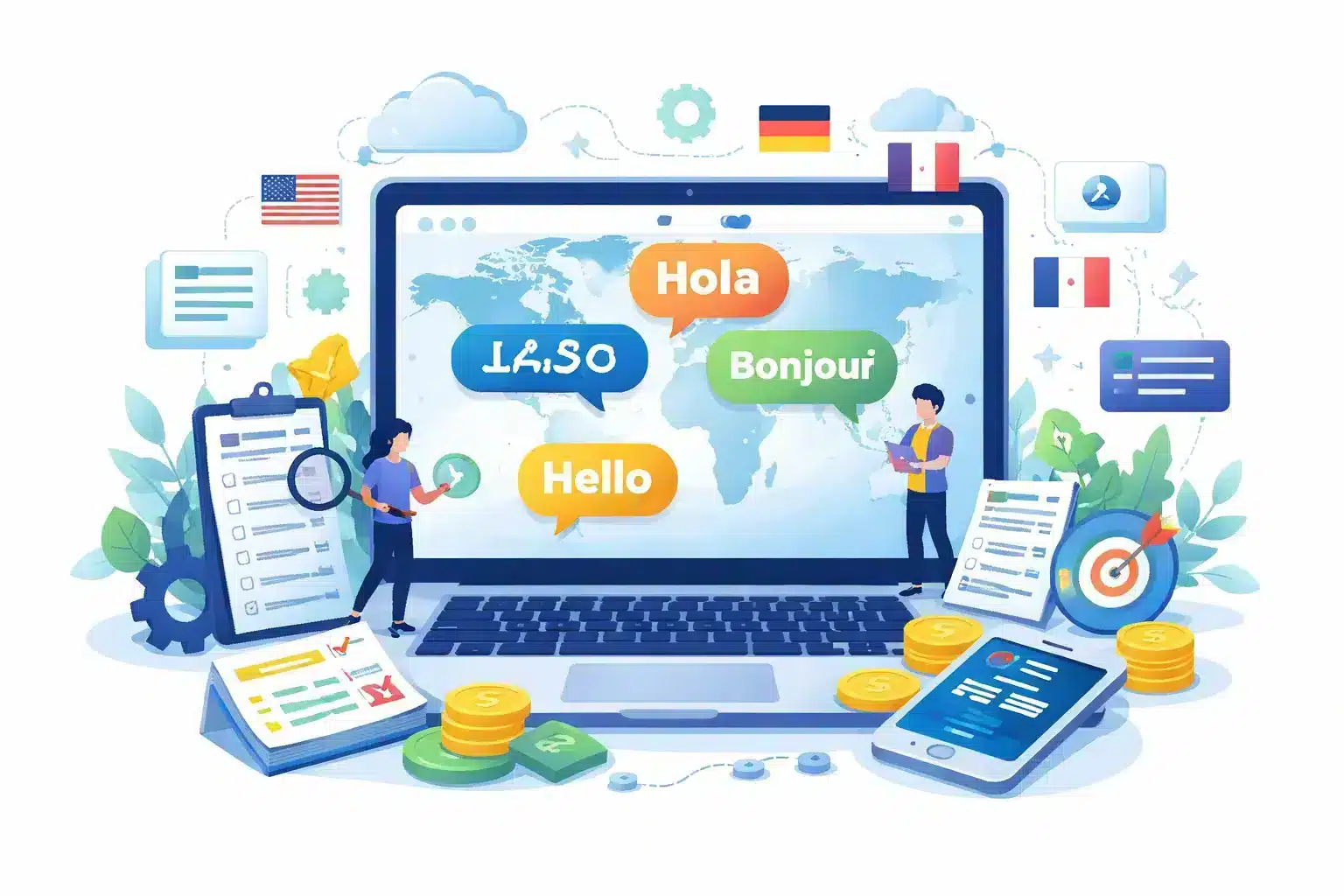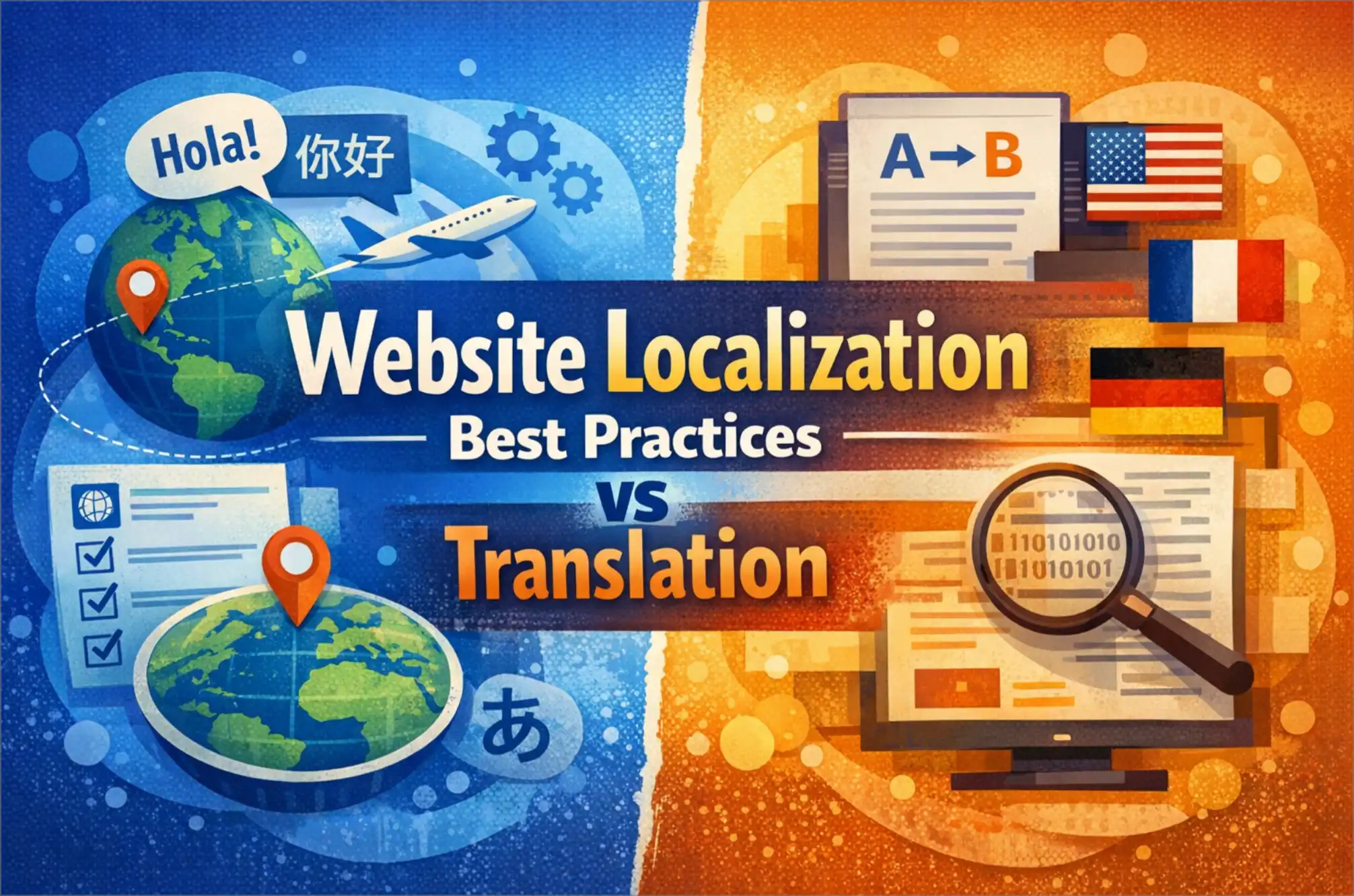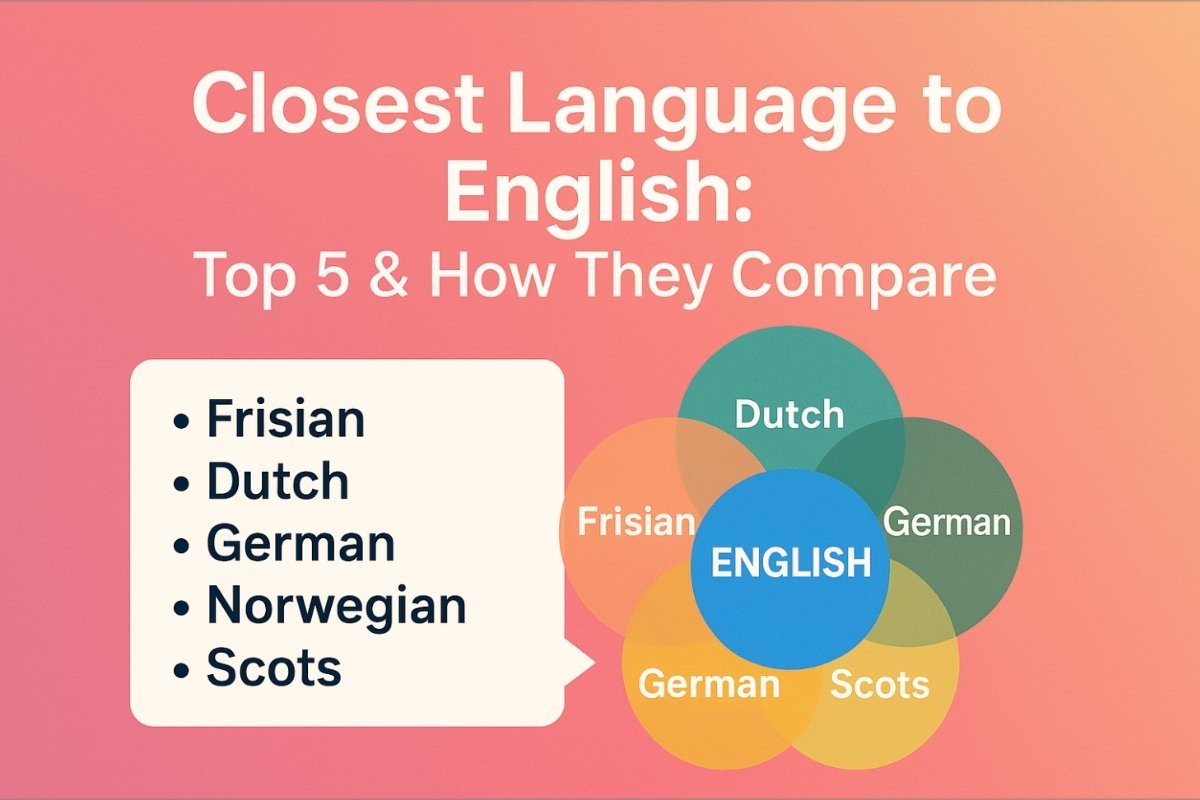Let’s embark on a journey into the distinctions that set languages and dialects apart.
Whether you’re a linguist, language enthusiast, educator, student of linguistics, or simply someone fascinated by language and culture, this article will provide you with a general overview of the difference between a language and a dialect.
Language and dialect definition
Before we begin this journey, we need to define our terms. Essentially, a language is a communication system known for its grammar, vocabulary, and sentence structure.
In contrast, a dialect represents a localized variation of a language, often shaped by geographical or social factors. Imagine it like a unique taste, adding a touch of regional or social flair to the language scene.
Language as a Spectrum
Now that we have established our definitions, let’s explore further the idea that languages exist along a spectrum. Visualize this continuum as a gradient where mutual intelligibility takes center stage. When speakers of two varieties can effortlessly understand each other, they’re considered dialects of the same language. However, when their conversation feels like deciphering a foreign code, they might as well be separate languages. This idea emphasizes the concept that defining language is not a black-and-white issue but an exercise in shades of grey.
Factors Affecting the Difference
First, we should take into account elements such as grammar and vocabulary. Experts often use these factors to differentiate between languages and regional variations.
However, language is not just about grammar and vocabulary. It has a close relationship with our social system. This element makes it more challenging to discern between languages and dialects. For example, over the decades and centuries, certain countries may have actively pursued the goal of defining certain regional languages as dialects to foster a sense of unity. This is the case in Italy, a country in which dialects can be wildly different from each other, and yet they are not recognized as languages on their own.
On the other hand, certain regional communities fight hard to gain recognition for their language as an individual entity, independent from the larger language. This is the case of the Catalan language in Spain.
Language and regional variations examples
To better grasp the intricacies of languages and dialects, let’s look at some instances from everyday life.
English: A Towering Example
English serves as an instructive example due to its widespread use across the world. It is a language that is widely spoken and has several dialects, each of which adds a distinctive flavor. From the crisp pronunciation of British English to the laid-back drawl of American English, the linguistic diversity within this language family is awe-inspiring. Regional differences can also be found within the same English-speaking country. For example, the type of US English you will hear at a local market in Georgia is drastically different from the type you will hear at a restaurant in New York City.
Arabic: Dialects that Span Continents
Another intriguing case study is Arabic. It serves as a language link from the Gulf to Morocco across continents. While Modern Standard Arabic is the formal, written language used in official documents and news broadcasts, each region has its own dialect. These dialects can be so distinct that speakers from different areas may struggle to understand one another.
Language of Many Dialects: Spanish
Spanish, being one of the spoken languages globally, serves as a compelling example of how dialectal differences can exist. From the rolling ‘r’ of Castilian Spanish in Spain to the rhythmic cadence of Caribbean Spanish, the language boasts a diverse tapestry of dialects spanning across nations and regions. Latin American countries alone are home to an array of regional variations influenced by indigenous languages, African heritage, and European colonization. While these dialects and variations may share a foundation, they often have distinct vocabulary, pronunciation, and idiomatic expressions. Strong dialectal differences can also be highlighted between different Spanish regions. The Spanish you will in Andalucia differs greatly from that spoken in Galicia.
Identity and Politics’ Function
Language also serves as a tool for expressing one’s identity and preserving one’s heritage. This is where the complexity of the linguistic landscape deepens.
Imagine a scenario where a region speaks a distinct dialect from the rest of the country. Over time, this local way of speaking could become an emblem of identity. Individuals can value their communication styles as significant aspects of their cultural heritage.
This is where the political dimension enters the scene. Language definition and codification are frequently tasks performed by institutions and governments. As mentioned earlier, they might favor a particular dialect or variant as the ‘standard’ to unify the nation or assert political control.
However, certain communities might feel their language is not being respected or even disregarded. This is why it’s important for governments to take into account the different regional variations and dialects of a language while making decisions about its definition and regulation.
Linguistic Diversity and Endangerment
Each dialect, no matter how small, is a repository of cultural heritage and history. However, in our quickly globalizing world, linguistic variety is threatened.
In certain cases, proactive efforts may be necessary to prevent certain dialects and minority languages from going extinct. Recognizing the importance of endangered dialects and developing tailored projects to preserve and revive them is crucial if we are to preserve linguistic diversity.
Linguistic Variation in Multilingual Societies
In many parts of the world, especially in multilingual societies, linguistic variation is the norm rather than the exception.
Consider India, a land of immense linguistic diversity. It’s home to hundreds of languages and dialects, and people often switch effortlessly between them depending on the social context. In such societies, linguistic variation is not a barrier but a reflection of the culture’s rich mosaic.
However, complex socioeconomic processes may also arise as a result of linguistic variety. Power, privilege, and identity are only a few of the components that the topic under consideration includes. Questions of which language or dialect is deemed more prestigious or useful often come into play, shaping access to education and job opportunities.
Technology’s Function
Technology also has an increasingly important role in linguistic dynamics.
By enabling cross-cultural contact, the internet, social media, and instant messaging services have totally revolutionized global connection. Both positive and negative effects are had on linguistic variation as a result of this.
On the one hand, it encourages linguistic variety by exposing people to a range of languages and dialects. However, it can also lead to a certain level of language standardization.
Furthermore, emojis have evolved into a language that transcends barriers, allowing two or more individuals to express their emotions and thoughts even when they don’t speak a common language. Still, the choice of emoji can still be influenced by cultural nuances, resulting in variations across accents and languages.
Both languages and dialects are predicted to alter significantly as a result of technological innovations. As a result, our verbal and written communication will unavoidably be impacted.
Over Time, Perceptions Change
Over time, there may be a change in the perception of language and dialects, as well as how they interact with each other.
How a specific language or dialect is perceived may change greatly from century to century and sometimes even from decade to decade. For example, certain dialects were once the official language of small states and were often used in literature. However, they may today be seen as inferior despite their cultural and historical value.
It is also important to acknowledge how language evolution through time can contribute to its perception and status. Language has an incredible ability to change, adapt, and evolve in order to remain relevant amidst changing contexts. It is a living entity that grows with the people who speak it.
Historical Background
Languages and dialects have not been static entities throughout history. Due to social, political, and cultural changes, their view has changed. In ancient times, language was often intertwined with identity, religion, and ethnicity. Dialects have contributed to communication and interpersonal relationships.
During colonial periods, the dominance of colonial languages led to shifts in linguistic attitudes. Native dialects were often suppressed or stigmatized. Furthermore, there was a surge in activism during this period, leading to the establishment of initiatives aimed at safeguarding and revitalizing endangered languages.
In the modern era, global communication and migration have brought diverse linguistic influences to our doorstep. As linguistic variety is increasingly accepted, people are starting to embrace multilingualism and value the enormous cultural diversity it provides.
The Complex Interactions of Language and Identity
Language and identity have a deep and inseparable relationship. One’s language is a key determinant of their identity since it reflects their social, cultural, or geographical ties. Humans have a strong bond with the languages they use, and these languages in turn, influence how they see themselves.
In regions with linguistic diversity, individuals may navigate multiple linguistic identities. For example, a person from Switzerland may fluently switch between Swiss German, French, and/or Italian, each language reflecting a different facet of their identity.
However, linguistic identity can also become a source of tension. In some cases, the promotion of a standardized language can marginalize or even suppress dialects, thi impacting the identity of entire communities.
Linguistic Revitalization Efforts
Valuing and safeguarding language variety is crucial to promote acceptance and openness. In various parts of the world, revitalization efforts have been made to keep endangered languages and dialects alive. These initiatives often involve language preservation and documentation, as well as educational programs to teach the language in an effort to increase its usage.
One shining example is the effort made by indigenous communities in North America to revive language heritage. In Canada, for instance, the First Nations are actively working to revive and sustain their ancestral languages.
Through the combined efforts of communities, the creation of language nests for young children, and the implementation of language immersion programs, languages that are on the verge of extinction can be revived and given the chance to thrive and preserve our history.
Language Variation and Globalisation
Languages and dialects have been significantly impacted by globalization. The frequent interaction among people from diverse linguistic backgrounds has significantly impacted language variety and led to new ways of speaking.
English, as a global lingua franca, has undergone significant changes due to globalization. It has assimilated words and phrases from other tongues, resulting in a vibrant linguistic environment. In today’s interconnected world, the phenomenon of “language contact” is not exclusive to English; it is a widespread feature.
In some cases, a dialect or language has been blended with another language to create a unique form of communication – such as Spanglish in the United States. This type of linguistic fusion often occurs when people from different backgrounds interact frequently and share their knowledge and culture.
Languages and Dialects in the Future: Embracing Diversity
As we gaze into the future, we envision a world where linguistic diversity is not merely acknowledged but wholeheartedly celebrated and actively preserved.
This effort should be made through different channels, ranging from research to education to governmental and non-profit initiatives.
By acknowledging and valuing the richness that multiple languages bring forth, we equip generations with the tools to grasp the intricacies that are inherent in human experiences. This fosters a world where every rare or widespread dialect and language finds its rightful place in the magnificent symphony of human expression.
Ensuring Linguistic Diversity
To maintain linguistic diversity, it’s necessary to act on different levels and through different channels. Here are some of the most important ones.
- Documentation: Recording dialects and endangered languages through documentation projects to create linguistic archives for future generations.
- Education: To secure the transfer of minority languages and dialects to future generations, educational resources and initiatives must be developed.
- Community Involvement: Encouraging communities to take ownership of their linguistic heritage and actively participate in language preservation efforts.
- Recognition: Advocating for the recognition and protection of dialects and minority languages at the regional, national, and international levels.
- Promotion: Fostering a sense of pride in the richness of linguistic diversity and advocating for the inclusion of dialects in different realms, such as literature, media, and the arts, is of utmost importance.
A Tapestry of Voices
In a world where communication goes beyond borders, embracing the diversity of languages is not only about preserving them; it is a celebration of the multitude of voices that intricately blend together to form our global cultural tapestry.
Each dialect and language, whether spoken by millions or just a few, represents a unique strand in this linguistic fabric, adding to the vast and lively heritage of our shared linguistic journey as humans.
Conclusion
In conclusion, the distinction between language and dialect is not just a linguistic one but a complex interplay of social, political, and cultural factors. The vitality and diversity of our linguistic landscape are a testament to our shared heritage, history, and human experience. It’s essential that we become proactive in celebrating and preserving this diversity.
Efforts towards documentation, education, recognition, promotion, and community involvement are crucial to ensuring that all voices, no matter how small or large, continue to resonate in the world’s rich linguistic tapestry. Embracing linguistic diversity, therefore, is not merely an academic endeavor; it’s an affirmation of our collective identity and culture that fosters an inclusive, understanding, and vibrant global community
Frequently Asked Questions
- What sets a language distinct from a dialect?
A language is, to put it simply, a special way of communicating that has its own rules for vocabulary, syntax, and sentence construction. A dialect, on the other hand, is a variety of a language that is spoken in a specific area or social context and is frequently impacted by historical and cultural elements. We are better able to appreciate the variety of languages spoken throughout the world when we are aware of these little variations.
- Can dialects become languages in the future?
Yes, dialects can indeed evolve into fully-fledged languages. When they acquire their own unique syntax, vocabulary, and identity—often affected by sociopolitical elements and historical circumstances—this shift takes place.
- What criteria are used to distinguish between a language and a dialect?
When distinguishing between languages and dialects, linguistic criteria like mutual intelligibility, grammar, and vocabulary are important factors. However, it is important to mention that the perception of languages and dialects is also greatly influenced by social and political factors.
- Are accents the same as dialects?
Accents, primarily focusing on pronunciation nuances, represent a subset of dialect features. Dialects, on the other hand, encompass a wider array of linguistic characteristics. Grammar, vocabulary, and even cultural aspects that separate regional or social speech patterns are all involved.
References
- Crystal, David. (2003). English as a Global Language. Cambridge University Press.
- Fishman, Joshua A. (1972). Language Sociology; A social science approach to studying language in society. Newbury House Publishers.
- Trudgill, Peter. (2010). Dialects: A Sociolinguistic Introduction. Oxford University Press.
- Mufwene, Salikoko S. (2008). Language Evolution: Contact, Competition, and Change. Continuum International Publishing Group.
Subtitles

Professional and Accurate Subtitle Services for your Videos.
- Video subtitles specifically tailor-made for improving accessibility.
- Using highly experienced subtitlers with years of industry experience.
- Professionally written and expertly timed.
Translation

We help the world’s top companies translate their content in over 73 languages!
- We localize content for internet websites, games, travel, cryptocurrencies, and more
- Expand your global audience by adding different languages.
- We work only with qualified translators and experienced content creators
Audio translation

Ensuring full accessibility for Blind and visual impaired audiences.
- Visual descriptive events as they occur in the video.
- Working with top audio describers to perfectly describe what is happening on-screen
- Professional sound recording.



